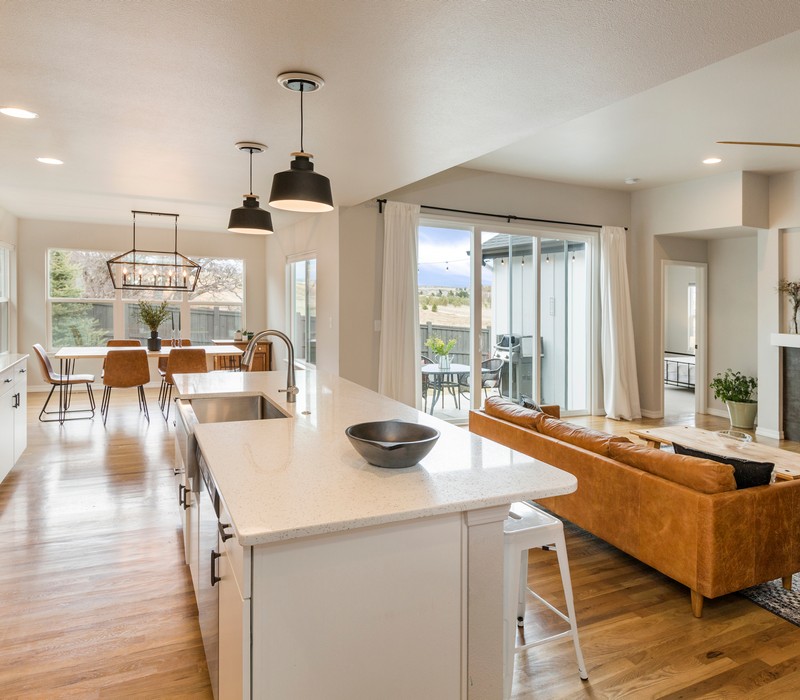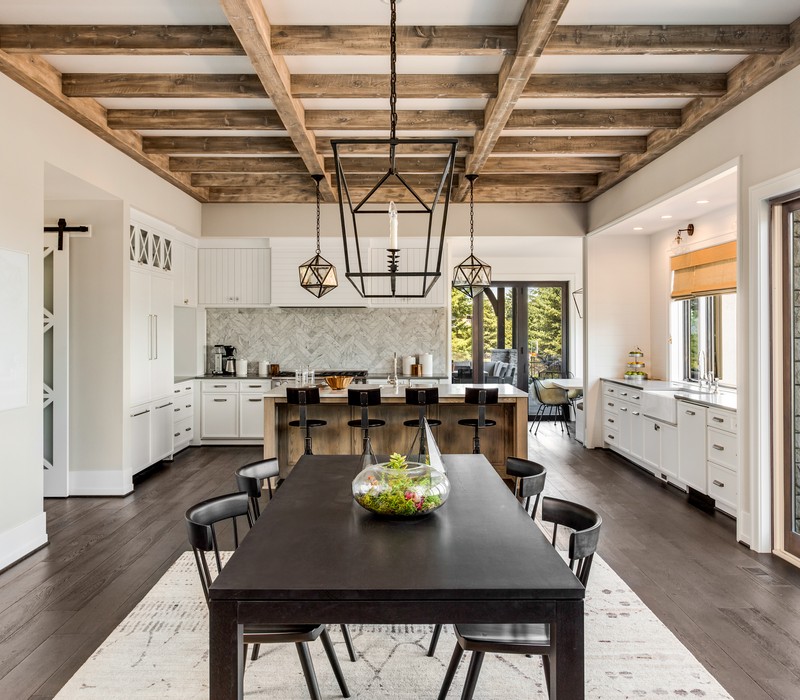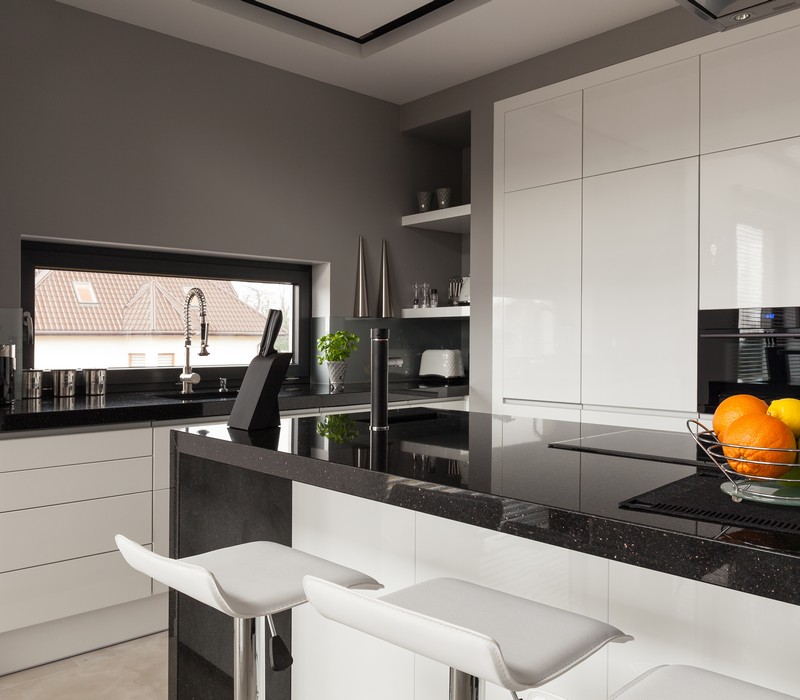Choosing the Right Kitchen Cabinet Material: A Comprehensive Guide for Austin Homes
Selecting the appropriate material for your kitchen cabinets is a fundamental decision that impacts both the aesthetics and functionality of your kitchen. In Austin, where homeowners blend modern design with practicality, understanding the various cabinet materials available is essential for creating a kitchen that is both beautiful and enduring. This guide delves into the most popular kitchen cabinet materials, their benefits and drawbacks, and how to choose the best option to suit your Austin home’s unique needs and style preferences.
Overview of Kitchen Cabinet Materials
Kitchen cabinets come in a variety of materials, each offering distinct advantages and characteristics. The choice of material affects not only the look and feel of your kitchen but also the cabinets’ durability, maintenance requirements, and cost. Below are the most common materials used for kitchen cabinets:
Solid Wood
Solid wood cabinets are prized for their natural beauty, durability, and timeless appeal. They are made entirely from wood, with each component crafted from a single piece of timber.
Benefits:
Durability: Solid wood is strong and long-lasting, capable of withstanding daily wear and tear.
Aesthetic Appeal: Offers a warm, classic look with rich textures and natural grain patterns.
Customization: Easily customizable with stains, paints, and finishes to match any design style.
Drawbacks:
Cost: Generally more expensive than other materials due to the quality and craftsmanship involved.
Maintenance: Requires regular upkeep, including polishing and refinishing, to maintain its appearance.
Weight: Heavier than other materials, necessitating sturdy installation and support.
Plywood
Plywood cabinets consist of multiple layers of wood veneer bonded together, providing strength and stability without the expense of solid wood.
Benefits:
Strength: More resistant to warping and cracking compared to particleboard or MDF.
Cost-Effective: Less expensive than solid wood while still offering durability and a high-quality appearance.
Versatility: Can be stained or painted to achieve a variety of looks, from traditional to modern.
Drawbacks:
Edge Finishing: Requires edge banding or molding to hide the exposed layers, adding to the overall cost.
Environmental Impact: Production involves the use of adhesives, which may emit volatile organic compounds (VOCs).

Medium-Density Fiberboard (MDF)
MDF is an engineered wood product made from wood fibers combined with resin and compressed into panels. It is widely used for cabinet boxes, doors, and shelves.
Benefits:
Smooth Surface: Provides a perfect surface for painting, resulting in a flawless finish without grain patterns.
Cost-Effective: Generally more affordable than solid wood and plywood.
Uniformity: Offers consistent strength and smoothness, reducing the risk of warping or splitting.
Drawbacks:
Moisture Sensitivity: Can swell or degrade when exposed to excessive moisture, making it less suitable for humid environments.
Durability: Not as strong as plywood or solid wood, potentially limiting its lifespan in high-use areas.
Weight: Heavier than particleboard, which can complicate installation and support.
Particleboard
Particleboard is made from wood particles bonded together with resin and compressed into panels. It is commonly used for lower-cost cabinets and interior shelves.
Benefits:
Affordability: One of the most budget-friendly options for kitchen cabinets.
Lightweight: Easier to handle and install compared to heavier materials like solid wood or plywood.
Versatility: Can be laminated or veneered to mimic the appearance of more expensive materials.
Drawbacks:
Durability: Less durable than MDF, plywood, and solid wood, prone to sagging and damage under heavy loads.
Moisture Resistance: Highly susceptible to moisture damage, making it unsuitable for areas exposed to spills or humidity.
Limited Lifespan: Typically has a shorter lifespan compared to other cabinet materials.
Laminate
Laminate cabinets feature a synthetic surface that can mimic the appearance of wood, stone, or other materials. They are applied to MDF, particleboard, or plywood bases.
Benefits:
Wide Range of Styles: Available in countless colors, patterns, and textures, allowing for versatile design options.
Durability: Resistant to scratches, stains, and moisture, making them ideal for busy kitchens.
Low Maintenance: Easy to clean and maintain with just regular wiping.
Drawbacks:
Aesthetic Limitations: While improvements have been made, laminate may not fully replicate the look and feel of natural materials.
Edge Durability: The edges can be prone to peeling or chipping over time.
Cost Variability: High-quality laminates can be as expensive as mid-range solid wood options.
Factors to Consider When Choosing Cabinet Materials
Budget
Your budget is a significant factor in determining the best cabinet material for your kitchen. Solid wood and high-quality plywood are typically more expensive, while MDF and particleboard offer more affordable options. Laminate cabinets can vary widely in cost depending on the quality and finish.
Tip: Prioritize essential areas for higher-quality materials and opt for more cost-effective options in less critical areas to balance budget and quality.
Kitchen Usage and Durability Needs
Consider how frequently you use your kitchen and the level of wear and tear your cabinets will endure. High-traffic kitchens benefit from more durable materials like solid wood or plywood, while occasional use may allow for MDF or particleboard.
Tip: For busy kitchens, prioritize materials that offer high durability and resistance to moisture and wear.
Aesthetic Preferences
The material you choose should align with your kitchen’s design style and color scheme. Solid wood and plywood provide a natural and warm look, while MDF and laminate offer a sleek and modern appearance.
Tip: Match the cabinet material with your overall kitchen theme, whether it’s traditional, modern, rustic, or transitional, to create a cohesive look.
Maintenance and Longevity
Different materials require varying levels of maintenance. Solid wood cabinets may need regular polishing and refinishing, whereas laminate and MDF cabinets are easier to clean and maintain.
Tip: Choose a material that fits your maintenance preferences and lifestyle to ensure your cabinets remain in good condition over time.
Environmental Considerations
If sustainability is important to you, opt for materials like bamboo, reclaimed wood, or FSC-certified plywood. These options reduce environmental impact and support responsible forestry practices.
Tip: Look for certifications and choose materials from environmentally responsible sources to ensure your cabinets are eco-friendly.

Top Cabinet Material Recommendations for Austin Kitchens
Solid Wood for Timeless Elegance
For homeowners seeking durability and a classic aesthetic, solid wood cabinets are an excellent choice. They offer unmatched beauty and can be customized with various stains and finishes to suit any kitchen style.
Popular Options: Maple, cherry, oak, and hickory.
Best For: Traditional, farmhouse, and upscale modern kitchens.
Plywood for Strength and Versatility
Plywood cabinets provide a robust and versatile option that can withstand daily use. They are suitable for a wide range of design styles and can be easily integrated with various finishes.
Popular Options: Birch plywood, oak plywood, and maple plywood.
Best For: Contemporary, transitional, and modern kitchens.
MDF for a Smooth, Painted Finish
MDF cabinets are ideal for those who prefer a painted look with a flawless finish. They are more affordable than solid wood and offer a smooth surface that is perfect for custom paint colors.
Popular Options: Painted MDF in white, gray, and other neutral tones.
Best For: Modern, minimalist, and contemporary kitchens.
Laminated Cabinets for Durability and Style
Laminate cabinets are perfect for homeowners looking for a wide variety of styles and easy maintenance. They are highly durable and resistant to scratches and stains, making them ideal for busy kitchens.
Popular Options: Wood-look laminates, metallic laminates, and abstract patterns.
Best For: Contemporary, industrial, and eclectic kitchen designs.
Working with Professional Cabinet Depots in Austin
Expert Design Consultation
Professional cabinet depots in Austin offer expert design consultations to help you choose the best materials for your kitchen. Their experienced designers can assess your kitchen layout, usage needs, and aesthetic preferences to recommend the most suitable cabinet materials and styles.
Customization and Personalization
Austin’s cabinet depots provide extensive customization options, allowing you to tailor your cabinets to meet your specific needs. From selecting the perfect material and finish to incorporating specialized storage solutions, customization ensures that your kitchen cabinets are both functional and stylish.
Quality Installation Services
Proper installation is crucial for the longevity and functionality of your The best kitchen cabinets in Austin . Professional installers ensure that your cabinets are fitted correctly, aligned properly, and operate smoothly. Quality installation prevents common issues such as misaligned doors and drawers, ensuring that your cabinets look and function their best.
Ongoing Support and Maintenance
Professional cabinet depots offer ongoing support and maintenance services to keep your cabinets in excellent condition. From routine inspections to repairs and upgrades, these services ensure that your kitchen cabinets remain functional and aesthetically pleasing over time.

Conclusion
Choosing the right material for your kitchen cabinets is a vital step in creating a kitchen that is both beautiful and functional. In Austin, where design meets practicality, selecting the appropriate cabinet material ensures that your kitchen remains stylish, durable, and efficient for years to come. By considering factors such as budget, usage, aesthetic preferences, maintenance, and environmental impact, you can make an informed decision that enhances your home’s value and your daily living experience.
Partnering with professional cabinet depots in Austin provides access to expert guidance, high-quality materials, and flawless installation services. Whether you prefer the timeless elegance of solid wood, the strength and versatility of plywood, the smooth finish of MDF, or the durability and style of laminate, the right cabinet material can transform your kitchen into a space that perfectly aligns with your lifestyle and design aspirations.
Invest in the right kitchen cabinet materials today and enjoy a kitchen that is not only visually stunning but also highly functional and built to last.
Cabinet Depot Austin
Address: 10609 Metric Blvd #100, Austin, TX 78758
Phone: (512) 956-4770
Website: https://cabinetdepot.us/kitchen-cabinets-in-austin/